Find Help
More Items From Ergsy search
-
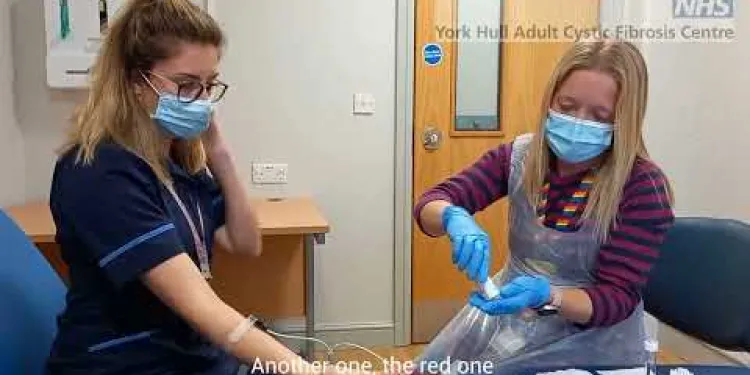
Sweat test | Diagnosing cystic fibrosis
Relevance: 100%
-

Idiopathic pulmonary fibrosis (IPF) research
Relevance: 26%
-

Can Botox help with excessive sweating?
Relevance: 22%
-

What tests are available for diagnosing Lyme disease?
Relevance: 22%
-
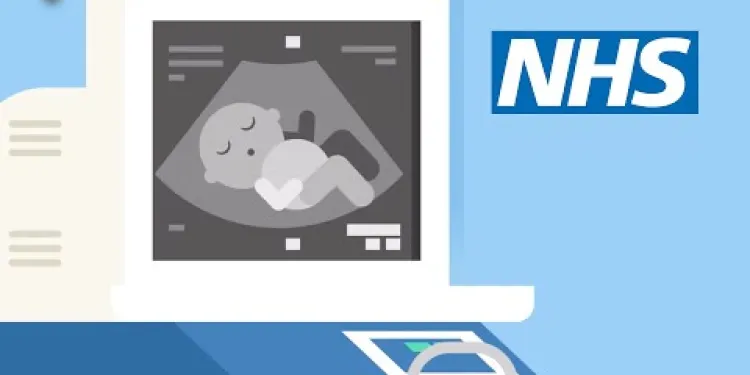
Screening tests for you and your baby | NHS
Relevance: 20%
-
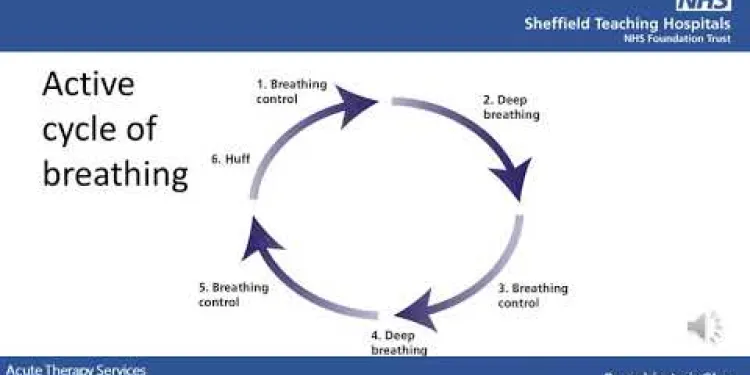
Bronchiectasis Class
Relevance: 19%
-

Is there a specific test to diagnose methanol poisoning?
Relevance: 19%
-

Bronchiectasis class presentation v2
Relevance: 18%
-

How is gonorrhoea diagnosed?
Relevance: 18%
-
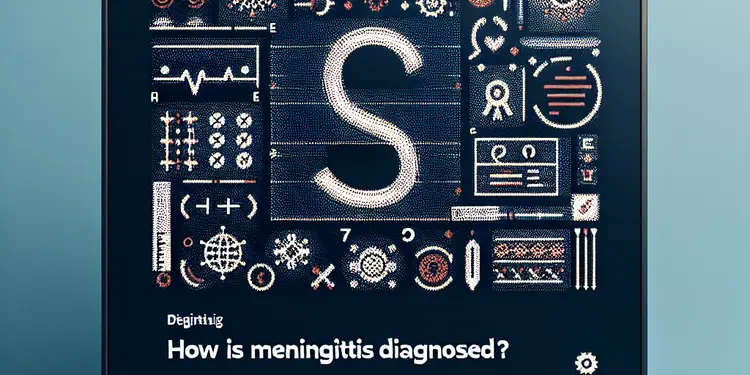
How is meningitis diagnosed?
Relevance: 18%
-

How is HIV diagnosed?
Relevance: 18%
-

How is asthma diagnosed?
Relevance: 18%
-

How is shingles diagnosed?
Relevance: 18%
-

How is thrombosis diagnosed?
Relevance: 18%
-

How is dementia diagnosed?
Relevance: 17%
-

How is psoriasis diagnosed?
Relevance: 17%
-
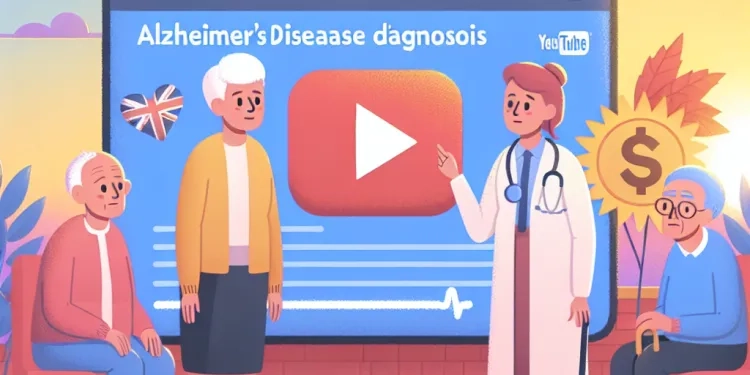
How is Alzheimer's disease diagnosed?
Relevance: 17%
-

How is Rubella diagnosed?
Relevance: 17%
-

How is lupus diagnosed in children?
Relevance: 17%
-

How is a concussion diagnosed?
Relevance: 17%
-

How is Type 2 Diabetes diagnosed?
Relevance: 17%
-

How is a concussion diagnosed?
Relevance: 17%
-

How can eczema be diagnosed?
Relevance: 17%
-

How is Crohn's disease diagnosed?
Relevance: 17%
-

How is Huntington's disease diagnosed?
Relevance: 17%
-

How is heart failure diagnosed?
Relevance: 17%
-

How is nettle rash diagnosed?
Relevance: 17%
-

How is a nut allergy diagnosed?
Relevance: 17%
-

How is ADHD diagnosed?
Relevance: 16%
-

How is bowel cancer diagnosed?
Relevance: 16%
-

How is appendicitis diagnosed?
Relevance: 16%
-

How is Chikungunya virus infection diagnosed?
Relevance: 16%
-

Is there an autism test?
Relevance: 16%
-

How is sleep apnea diagnosed?
Relevance: 16%
-

How is sickle cell disease diagnosed?
Relevance: 16%
-

How is Carpal Tunnel Syndrome diagnosed?
Relevance: 16%
-

How is testicular cancer diagnosed?
Relevance: 16%
-

How is Marburg virus disease diagnosed?
Relevance: 16%
-
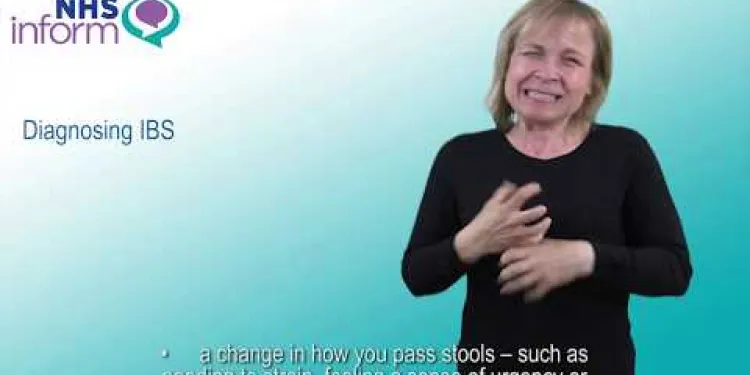
Diagnosing irritable bowel syndrome (IBS)
Relevance: 16%
-

How is motor neurone disease diagnosed?
Relevance: 16%
Sweat Test | Diagnosing Cystic Fibrosis
Introduction to the Sweat Test
The sweat test is a crucial diagnostic tool used in the United Kingdom to confirm cases of cystic fibrosis (CF). This test measures the concentration of chloride in the patient’s sweat. Elevated levels of chloride are indicative of cystic fibrosis, an inherited condition that affects the respiratory and digestive systems. The test is non-invasive and provides valuable information for healthcare professionals to make accurate diagnoses.Why is the Sweat Test Important?
Cystic fibrosis is a life-threatening disorder that requires early detection and intervention to manage symptoms effectively. The sweat test is essential because it helps diagnose CF early in a child's life, allowing for timely treatment and better management of the condition. Early diagnosis can significantly improve a patient's quality of life and life expectancy, making the sweat test a vital component of neonatal and paediatric care.How is the Sweat Test Conducted?
The test is typically performed in a hospital or specialised clinic by trained healthcare professionals. The procedure involves stimulating the sweat glands using a mild electrical current and a chemical called pilocarpine. Once enough sweat is collected using a small gauze or collector, the sample is analysed for its chloride content. Elevated levels, typically above 60 mmol/L, suggest a positive diagnosis for cystic fibrosis.Interpreting Sweat Test Results
Interpreting the results of a sweat test is critical. Normal chloride levels in sweat are generally below 40 mmol/L. Levels between 40 and 60 mmol/L are considered borderline and may require further testing. Levels above 60 mmol/L are highly indicative of cystic fibrosis. In case of a positive test result, additional genetic testing may be recommended to confirm the diagnosis.Limitations and Follow-Up
While the sweat test is highly reliable, it’s not infallible. False positives and negatives can occur, although they are rare. Therefore, if the sweat test results are inconclusive, further diagnostic methods such as genetic testing or nasal potential difference measurements might be utilised to establish a definitive diagnosis. Follow-up care is essential to monitor and manage the disease effectively.Conclusion
The sweat test is a pivotal diagnostic procedure for cystic fibrosis in the United Kingdom. Its ability to detect high chloride levels in sweat makes it an invaluable tool for early diagnosis and treatment of CF. Though it has some limitations, the sweat test, combined with other diagnostic methods, provides a comprehensive approach to managing and understanding cystic fibrosis, ultimately aiding in improving patient outcomes.Sweat Test | Diagnosing Cystic Fibrosis
Introduction to the Sweat Test
The sweat test is a very important test used in the UK to find out if someone has cystic fibrosis (CF). This test looks at how much chloride is in a person's sweat. Too much chloride means a person might have cystic fibrosis. CF is a condition that affects the lungs and digestion. The test doesn't hurt and helps doctors know if someone has CF.Why is the Sweat Test Important?
Cystic fibrosis is a serious illness. It's important to find it early so treatment can start. The sweat test is important because it helps doctors find CF early, especially in children. Early treatment can help children feel better and live longer. This makes the sweat test very important for young children and babies.How is the Sweat Test Conducted?
Doctors do the sweat test in a hospital or special clinic. They use a gentle electric current and a chemical called pilocarpine to make the skin sweat. They collect the sweat on a small cloth. Then, they check how much chloride is in the sweat. If there is a lot, usually more than 60 mmol/L, it might mean the person has cystic fibrosis.Interpreting Sweat Test Results
Doctors carefully look at the results. If chloride levels are lower than 40 mmol/L, it is normal. If levels are between 40 and 60 mmol/L, doctors might do more tests. If levels are over 60 mmol/L, it probably means the person has cystic fibrosis. If the test says there might be CF, other tests can help make sure.Limitations and Follow-Up
The sweat test is very good, but it’s not perfect. Sometimes, it can say someone has CF when they don’t, or miss CF when someone actually has it. If the test isn’t clear, doctors might use other tests, like genetic tests, to be sure. It's important to have follow-up care to handle the illness well.Conclusion
The sweat test is a key test for finding cystic fibrosis in the UK. It helps doctors find high chloride levels in sweat to diagnose CF early. Although it is not perfect, when combined with other tests, it helps doctors understand and treat CF better, helping patients have better lives. For people who find reading hard, using apps that read text aloud or breaking information into small parts can help. Parents or caregivers can support by discussing information and answering questions.Frequently Asked Questions
What is a sweat test?
A sweat test measures the amount of chloride in sweat to help diagnose cystic fibrosis (CF). It is non-invasive and considered the gold standard for diagnosing CF.
How does a sweat test diagnose cystic fibrosis?
The test measures the amount of chloride in sweat, which is elevated in people with cystic fibrosis due to a defect in the CFTR gene affecting chloride transport.
Who should get a sweat test?
Individuals, especially infants or children, showing symptoms of cystic fibrosis, or those with a family history of the condition should undergo a sweat test.
How is a sweat test performed?
A small amount of sweat is collected from the forearm using a non-invasive technique involving a special device that stimulates sweating.
Is the sweat test painful?
The test is generally not painful, though some individuals might experience mild discomfort from the devices used to stimulate and collect sweat.
What preparations are needed before a sweat test?
Usually, no special preparations are required. However, ensure the individual is well-hydrated and avoids lotions or creams on the skin before the test.
How long does it take to get results from a sweat test?
Results are typically available within a few days, depending on the medical facility.
What do sweat test results mean?
A high level of chloride in the sweat suggests cystic fibrosis, while normal levels usually indicate the absence of the condition.
Can adults undergo the sweat test?
Yes, adults can also be tested, especially if they exhibit symptoms of cystic fibrosis that were not diagnosed earlier.
Where can I get a sweat test in the UK?
Sweat tests are typically performed at specialized cystic fibrosis centres or hospitals with the appropriate facilities.
Is the sweat test covered by NHS?
Yes, the sweat test is usually covered by the NHS if it is medically indicated.
What are the limitations of a sweat test?
False positives and false negatives can occur. However, the test is highly reliable when performed correctly.
What is the follow-up after a positive sweat test?
If a sweat test indicates cystic fibrosis, further genetic testing and evaluations will be performed to confirm the diagnosis and plan appropriate treatment.
Are there any risks associated with a sweat test?
The sweat test is safe with minimal risks. Rarely, some individuals might experience skin irritation from the stimulation process.
Can cystic fibrosis be diagnosed prenatally?
Yes, prenatal genetic testing can identify cystic fibrosis. However, a sweat test can confirm the diagnosis after birth.
What is a sweat test?
A sweat test is a simple way to learn about your body. It checks how much salt is in your sweat. People do this test to find out about certain health conditions.
Here's how it works:
- First, they put a small device on your skin. It might tingle a bit.
- Then, they collect your sweat.
- After that, they look at how salty your sweat is.
This test can help doctors understand if you need special care.
Supportive tools:
- Ask someone you trust to explain it to you.
- Use images or videos to see how the test works.
The sweat test looks at how much chloride is in sweat. This helps doctors find out if someone has cystic fibrosis (CF). It does not hurt and is the best way to check for CF.
Some people like using picture cards or audio recordings to understand better. You can also ask someone to read out loud to you.
How can a sweat test show if someone has cystic fibrosis?
A sweat test is used to find out if a person has cystic fibrosis. Cystic fibrosis is a health problem that affects the lungs and other parts of the body.
Here is how the test works:
- A doctor or nurse will put a special solution on a small area of your skin.
- Then, they put a small device on your skin to make you sweat.
- Next, they collect the sweat from your skin.
- The sweat is tested to see how much salt it has.
If the sweat has a lot of salt, it might mean that the person has cystic fibrosis.
If you find reading hard, you can:
- Ask someone to read with you.
- Use a text-to-speech tool that reads the text out loud.
- Break the information into small parts and read slowly.
The test checks how much chloride is in sweat. People with cystic fibrosis have more chloride in their sweat because of a problem with a gene called CFTR. This gene is like a set of instructions that helps move chloride around the body. When it doesn't work right, too much chloride builds up in the sweat.
Who needs a sweat test?
A doctor might want someone to have a sweat test to check for a health problem called cystic fibrosis. This test can help show if someone has this condition.
People who have breathing problems, lots of lung infections, or other symptoms might need this test. It's important to find out why these things are happening.
If you or someone you know is having these problems, talk to a doctor. They can decide if a sweat test is a good idea.
Using pictures or videos can help you understand what happens in a sweat test. Ask the doctor if you can use these to learn more.
If a baby or child is coughing a lot, feels very tired, or has trouble breathing, they might need a test. This test checks for something called cystic fibrosis. If someone in the family has this condition, it’s a good idea to do the test too.
How do you do a sweat test?
A sweat test checks how salty your sweat is. Here is how it’s done:
- A small area on your skin is cleaned.
- Then, a special liquid is put on your skin to make you sweat.
- Next, a tiny gadget collects the sweat.
- After a while, the sweat is checked for salt.
Tips to help you:
- Ask a grown-up to explain anything you don’t understand.
- Use pictures or videos to see how a sweat test is done.
A little bit of sweat is taken from the arm. This is done in a gentle way that does not hurt. A special tool is used to help the skin make sweat.
Does the sweat test hurt?
The test does not hurt most people. But some people might feel a little uncomfortable from the tools used to make and collect sweat.
How to get ready for a sweat test
Here is what you need to do before a sweat test:
- Wear short-sleeved clothes. They make the test easier.
- Drink water. It helps to stay hydrated.
- Do not put any lotion on your skin. It can affect the test.
Ask a grown-up for help if you need to. You can also use a calendar or timer to remember when the test is. They are helpful tools.
Most of the time, you don't need to do anything special before the test. Just make sure the person drinks enough water. Tell them not to use lotions or creams on their skin before the test.
How long before you know the results from a sweat test?
You will usually find out the results within a few days.
If you need help to understand the results, you can ask a doctor or a nurse. They are there to help you.
Tools like talking books or apps can also help if you find reading hard.
You usually get your results in a few days. How fast you get them can depend on the place you went to for the test.
What Do Sweat Test Results Tell Us?
Sweat test results show how much salt is in your sweat.
This test can help doctors understand if you have certain illnesses.
If you have questions, ask a doctor or nurse to explain the results.
They can use pictures or simple words to help you understand.
If there is a lot of chloride in the sweat, it might mean a person has cystic fibrosis. If the chloride levels are normal, it usually means they don't have the condition.
Can grown-ups take the sweat test?
Yes, grown-ups can get checked, too. This is important if they have signs of cystic fibrosis but didn't know it before.
Where can I get a sweat test in the UK?
You can find places for a sweat test in the UK at hospitals or clinics. A doctor can help you. They will tell you where to go. Ask your doctor for advice.
Using a map or asking someone else can also help. Remember, you are not alone. People are there to help you.
Sweat tests are usually done at special cystic fibrosis places or hospitals with the right tools.
Will the NHS pay for the sweat test?
The NHS might pay for a sweat test if you need it. You can ask your doctor if they can help you get it. If you have questions, talk to a nurse or doctor. They will help you understand.
If you need help reading, you can use tools that read out loud. You can also ask someone to read with you. Don't be afraid to ask questions if you are confused.
Yes, the NHS will usually pay for the sweat test if a doctor says you need it.
What might be problems with a sweat test?
A sweat test checks sweat to learn about health, but it has some problems.
- It might not work for everyone. Some people can have wrong results.
- It needs special tools and trained people to do it right.
- It only tells about certain problems, not everything about your health.
If you want help understanding, ask a doctor or a nurse. They can explain more and answer questions.
Sometimes, the test can say there is a problem when there isn't (this is a false positive). Other times, it might say everything is fine when there is a problem (this is a false negative). But if the test is done the right way, it usually works well.
What happens after a positive sweat test?
If a sweat test shows signs of cystic fibrosis, doctors will do more tests. These tests help them make sure about the problem and decide on the best way to help.
Is a sweat test safe?
The sweat test is safe. There are only a few risks. Sometimes, the skin might get a little red or itchy. This happens when we make the skin sweat.
Can doctors find out if a baby has cystic fibrosis before it is born?
Doctors can do tests to see if a baby has cystic fibrosis before it is born. This is called a prenatal test.
If you want more help to understand, you can ask a doctor to explain it. You can also use pictures or videos to learn more.
Yes, doctors can test babies before they are born to see if they have cystic fibrosis. But, after the baby is born, a test called a sweat test can confirm if the baby really has cystic fibrosis.
If you find this hard to read, you can ask someone to read it to you or use a device that reads the text out loud. You might also find it helpful to look up cystic fibrosis online or with help from someone to understand it better.
Useful Links
- Ergsy carfully checks the information in the videos we provide here.
- Videos shown by Youtube after a video has completed, have NOT been reviewed by ERGSY.
- To view, click the arrow in centre of video.
- Most of the videos you find here will have subtitles and/or closed captions available.
- You may need to turn these on, and choose your preferred language.
- Go to the video you'd like to watch.
- If closed captions (CC) are available, settings will be visible on the bottom right of the video player.
- To turn on Captions, click settings .
- To turn off Captions, click settings again.
More Items From Ergsy search
-

Sweat test | Diagnosing cystic fibrosis
Relevance: 100%
-

Idiopathic pulmonary fibrosis (IPF) research
Relevance: 26%
-

Can Botox help with excessive sweating?
Relevance: 22%
-

What tests are available for diagnosing Lyme disease?
Relevance: 22%
-

Screening tests for you and your baby | NHS
Relevance: 20%
-

Bronchiectasis Class
Relevance: 19%
-

Is there a specific test to diagnose methanol poisoning?
Relevance: 19%
-

Bronchiectasis class presentation v2
Relevance: 18%
-

How is gonorrhoea diagnosed?
Relevance: 18%
-

How is meningitis diagnosed?
Relevance: 18%
-

How is HIV diagnosed?
Relevance: 18%
-

How is asthma diagnosed?
Relevance: 18%
-

How is shingles diagnosed?
Relevance: 18%
-

How is thrombosis diagnosed?
Relevance: 18%
-

How is dementia diagnosed?
Relevance: 17%
-

How is psoriasis diagnosed?
Relevance: 17%
-

How is Alzheimer's disease diagnosed?
Relevance: 17%
-

How is Rubella diagnosed?
Relevance: 17%
-

How is lupus diagnosed in children?
Relevance: 17%
-

How is a concussion diagnosed?
Relevance: 17%
-

How is Type 2 Diabetes diagnosed?
Relevance: 17%
-

How is a concussion diagnosed?
Relevance: 17%
-

How can eczema be diagnosed?
Relevance: 17%
-

How is Crohn's disease diagnosed?
Relevance: 17%
-

How is Huntington's disease diagnosed?
Relevance: 17%
-

How is heart failure diagnosed?
Relevance: 17%
-

How is nettle rash diagnosed?
Relevance: 17%
-

How is a nut allergy diagnosed?
Relevance: 17%
-

How is ADHD diagnosed?
Relevance: 16%
-

How is bowel cancer diagnosed?
Relevance: 16%
-

How is appendicitis diagnosed?
Relevance: 16%
-

How is Chikungunya virus infection diagnosed?
Relevance: 16%
-

Is there an autism test?
Relevance: 16%
-

How is sleep apnea diagnosed?
Relevance: 16%
-

How is sickle cell disease diagnosed?
Relevance: 16%
-

How is Carpal Tunnel Syndrome diagnosed?
Relevance: 16%
-

How is testicular cancer diagnosed?
Relevance: 16%
-

How is Marburg virus disease diagnosed?
Relevance: 16%
-

Diagnosing irritable bowel syndrome (IBS)
Relevance: 16%
-

How is motor neurone disease diagnosed?
Relevance: 16%


